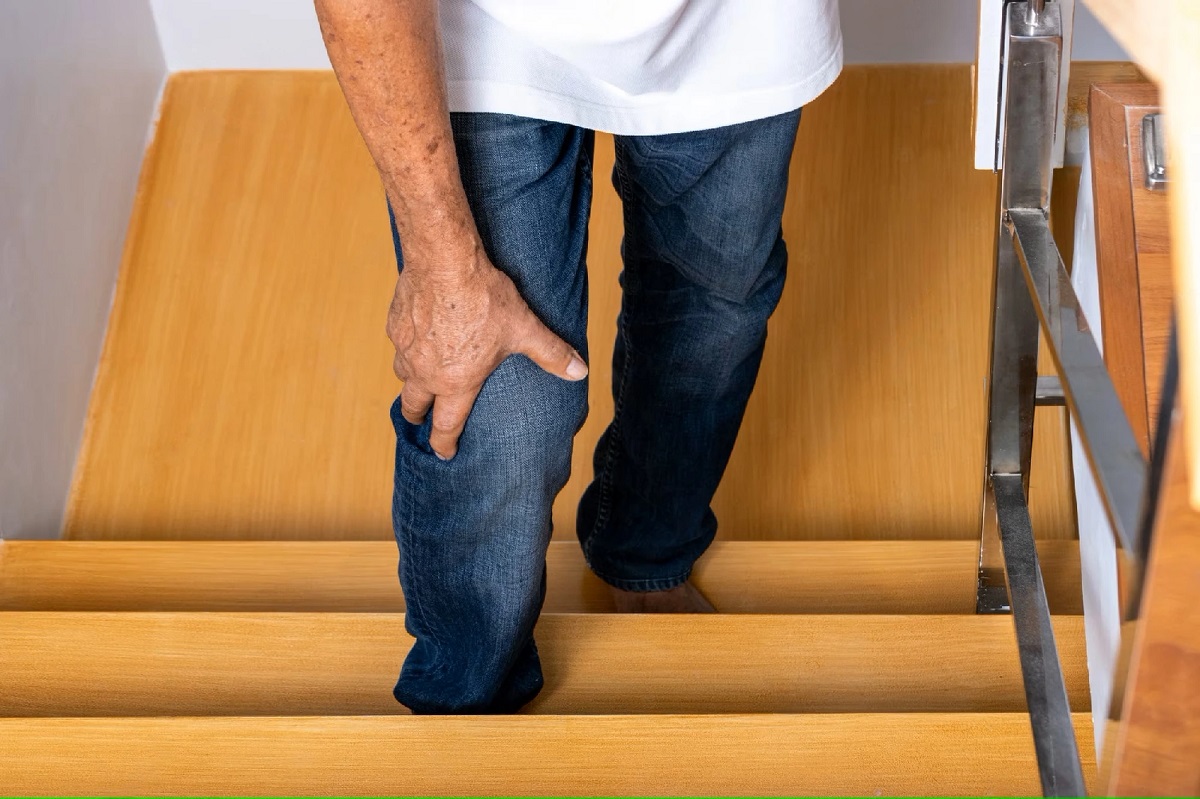

Articles
My Knees Hurt When I Go Up Stairs
Modified: December 7, 2023
Find informative articles on how to relieve knee pain and discomfort when climbing stairs. Expert tips and exercises for stronger knees.
(Many of the links in this article redirect to a specific reviewed product. Your purchase of these products through affiliate links helps to generate commission for Storables.com, at no extra cost. Learn more)
Introduction
Knee pain can be a frustrating and debilitating condition that affects people of all ages. Whether you’re an athlete or someone who leads a sedentary lifestyle, knee pain can significantly impact your daily activities and quality of life. One common complaint many individuals have is experiencing knee pain when going up stairs. This seemingly simple task can become a daunting challenge for those dealing with knee discomfort.
In this article, we will explore the various causes of knee pain when going up stairs, common conditions related to this issue, symptoms to watch out for, and effective treatment options. Additionally, we will discuss preventive measures and home remedies that can help alleviate knee pain, enabling you to move freely and without discomfort.
Key Takeaways:
- Understanding the root causes of knee pain, such as injuries, arthritis, and overuse, is crucial in determining the most effective treatment and management strategies. Seeking early medical intervention and diagnosis is essential for alleviating knee pain and restoring mobility.
- Implementing preventive measures, such as maintaining a healthy weight, exercising regularly, and using proper technique during activities, can significantly reduce the risk of developing knee pain. Combining home remedies with medical interventions provides a holistic approach to managing knee pain and improving overall knee health.
Read more: Knee Clicks When Going Up Stairs
Understanding Knee Pain
The knee joint is a complex structure that plays a crucial role in supporting our body weight and facilitating movement. It is made up of bones, cartilage, ligaments, and tendons, all working together to provide stability and flexibility. When any component of the knee experiences damage or undergoes undue stress, it can lead to pain and limited mobility.
Knee pain can vary in intensity and location, depending on the underlying cause. It may be localized to a specific area or radiate throughout the knee joint. The pain can also be accompanied by swelling, stiffness, and a decreased range of motion.
Causes of Knee Pain
There are numerous factors that can contribute to knee pain when going up stairs. Some of the common causes include:
- Overuse or repetitive strain injuries from activities that involve frequent bending of the knee, such as running or jumping.
- Traumatic injuries, such as ligament sprains, meniscal tears, or fractures.
- Arthritis, specifically osteoarthritis, which is often characterized by degeneration of the joint cartilage.
- Patellofemoral pain syndrome, a condition that involves pain in the front of the knee due to improper tracking of the kneecap.
These are just a few examples, and there can be other underlying causes that contribute to knee pain when going up stairs. It’s essential to consult a medical professional for an accurate diagnosis and appropriate treatment plan.
Key Takeaways:
- Understanding the root causes of knee pain, such as injuries, arthritis, and overuse, is crucial in determining the most effective treatment and management strategies. Seeking early medical intervention and diagnosis is essential for alleviating knee pain and restoring mobility.
- Implementing preventive measures, such as maintaining a healthy weight, exercising regularly, and using proper technique during activities, can significantly reduce the risk of developing knee pain. Combining home remedies with medical interventions provides a holistic approach to managing knee pain and improving overall knee health.
Read more: Knee Clicks When Going Up Stairs
Understanding Knee Pain
The knee joint is a complex structure that plays a crucial role in supporting our body weight and facilitating movement. It is made up of bones, cartilage, ligaments, and tendons, all working together to provide stability and flexibility. When any component of the knee experiences damage or undergoes undue stress, it can lead to pain and limited mobility.
Knee pain can vary in intensity and location, depending on the underlying cause. It may be localized to a specific area or radiate throughout the knee joint. The pain can also be accompanied by swelling, stiffness, and a decreased range of motion.
There are various factors that can contribute to knee pain. These include:
- Injuries: Traumatic injuries, such as ligament sprains, meniscal tears, or fractures, can cause knee pain. These injuries can occur due to a fall, sports-related activities, or accidents.
- Arthritis: Arthritis is a common cause of knee pain, especially in older adults. Osteoarthritis, the most prevalent form of arthritis, involves the degeneration of joint cartilage over time. Rheumatoid arthritis, an autoimmune condition, can also affect the knees and cause pain.
- Overuse or Repetitive Strain: Engaging in activities that involve frequent bending of the knee, such as running, jumping, or climbing stairs, can lead to overuse injuries. Over time, the repetitive strain can cause inflammation and pain in the knee joint.
- Patellofemoral Pain Syndrome: This condition, also known as runner’s knee, occurs when the patella (kneecap) does not track properly over the femur (thighbone). It can cause pain in the front of the knee, especially when going up or down stairs.
- Bursitis: Bursae are small, fluid-filled sacs that cushion the knee joint. When these sacs become inflamed, usually due to repetitive motion or injury, knee pain can result.
- Muscle Imbalances: Imbalances in the muscles surrounding the knee, such as weak quadriceps or tight hamstrings, can place extra stress on the joint and lead to pain.
It’s important to note that knee pain can also be a symptom of underlying medical conditions, such as infections or tumors. Therefore, if you experience persistent knee pain or if it worsens over time, it’s crucial to seek medical attention for an accurate diagnosis.
Understanding the root cause of knee pain is essential in determining the most appropriate treatment and management strategies. By addressing the underlying issue, you can effectively alleviate pain, restore mobility, and improve your overall quality of life.
Causes of Knee Pain
Knee pain can be caused by a variety of factors, ranging from injuries to medical conditions. Understanding the underlying causes is vital in determining the appropriate treatment and management options. Here are some common causes of knee pain:
- Injuries: Traumatic injuries, such as ligament sprains, meniscal tears, or fractures, are common causes of knee pain. These injuries can occur during sports activities, accidents, or falls. The anterior cruciate ligament (ACL), medial collateral ligament (MCL), and menisci are particularly susceptible to injury.
- Arthritis: Osteoarthritis and rheumatoid arthritis are two types of arthritis that can cause knee pain. Osteoarthritis occurs when the protective cartilage in the knee joint wears down over time, resulting in pain, inflammation, and stiffness. Rheumatoid arthritis is an autoimmune condition that causes joint inflammation and can affect multiple joints, including the knees.
- Tendonitis: Tendonitis refers to inflammation or irritation of the tendons around the knee. This condition commonly affects the patellar tendon, which connects the kneecap to the shinbone. Overuse of the knee joint, repetitive activities, or sudden increase in intensity or duration of physical activity can contribute to tendonitis.
- Bursitis: Bursitis is the inflammation of the bursae, small sacs filled with fluid that act as cushions between bones, tendons, and muscles. These sacs can become irritated and swollen, leading to knee pain. Bursitis is often caused by repeated activities that put pressure on the knee joint, such as kneeling or excessive squatting.
- Patellofemoral Pain Syndrome: Also known as runner’s knee, this condition can cause knee pain, especially when going up and down stairs or sitting for extended periods. It occurs when the cartilage on the underside of the patella becomes irritated or worn down, causing pain around the kneecap.
- Overuse or Repetitive Strain: Engaging in activities that involve repetitive bending of the knee, such as running, jumping, or climbing stairs, can lead to overuse injuries. The repetitive strain on the knee joint can result in inflammation, pain, and swelling.
- Obesity: Excess weight puts additional stress on the knee joints, potentially leading to pain and degeneration. The excess load can cause accelerated wear and tear of the joint structures, increasing the risk of developing conditions such as osteoarthritis.
It’s important to note that these are just some of the common causes of knee pain. There can be other underlying factors contributing to knee discomfort. If you experience persistent knee pain or if the pain significantly impairs your mobility, it’s essential to seek medical advice for an accurate diagnosis and appropriate treatment plan.
By understanding the causes of knee pain, you can take proactive steps to prevent further injury or manage existing conditions. Working closely with healthcare professionals, implementing appropriate lifestyle modifications, and following a targeted treatment plan can help alleviate knee pain and improve your overall knee health.
Common Conditions Related to Knee Pain
Knee pain can be associated with various conditions that affect the joint, cartilage, ligaments, and surrounding structures. Understanding these conditions can provide insight into the specific causes of knee pain and help guide treatment options. Here are some common conditions related to knee pain:
- Osteoarthritis: This is the most common form of arthritis and a leading cause of knee pain. Osteoarthritis occurs when the protective cartilage that cushions the ends of the bones in the knee joint gradually wears down over time. This causes friction between the bones, leading to pain, stiffness, swelling, and reduced mobility.
- Rheumatoid Arthritis: Unlike osteoarthritis, rheumatoid arthritis is an autoimmune disease that affects multiple joints, including the knees. The immune system mistakenly attacks the lining of the joint, causing inflammation, pain, swelling, and joint deformity. People with rheumatoid arthritis often experience pain in the morning or after periods of inactivity.
- Meniscal Tears: The menisci are crescent-shaped cartilage pads that act as shock absorbers in the knee joint. They can tear due to sudden twisting or rotational movements, especially in athletes or individuals who perform activities that involve pivoting or heavy lifting. Meniscal tears can cause pain, swelling, stiffness, and a sensation of locking or catching in the knee.
- Ligament Injuries: The knee is stabilized by four main ligaments: the anterior cruciate ligament (ACL), posterior cruciate ligament (PCL), medial collateral ligament (MCL), and lateral collateral ligament (LCL). These ligaments can be strained or torn, usually due to sudden stops, changes in direction, or direct blows to the knee. Ligament injuries can cause severe pain, instability, and difficulty bearing weight on the affected leg.
- Patellar Tendonitis: Also known as jumper’s knee, patellar tendonitis is an overuse injury that affects the tendon connecting the kneecap (patella) to the shinbone. Repetitive jumping or activities that involve frequent knee bending, such as running or squatting, can cause inflammation, pain, and tenderness in the patellar tendon.
- Patellofemoral Pain Syndrome: This condition is often referred to as runner’s knee and is characterized by pain in the front of the knee, surrounding the patella. It is commonly caused by imbalances in the muscles around the knee, misalignment of the patella, or overuse. Knee pain is often aggravated by activities such as running, climbing stairs, or sitting for prolonged periods.
- Bursitis: Bursitis occurs when the bursae, small fluid-filled sacs that provide cushioning in the knee joint, become inflamed. This inflammation can be the result of repetitive movements, prolonged kneeling, or direct trauma to the knee. Bursitis can lead to localized pain, swelling, and tenderness in the affected area.
These are just some of the common conditions that can contribute to knee pain. It’s important to consult with a healthcare professional for an accurate diagnosis and appropriate treatment plan tailored to your specific condition. Proper diagnosis is crucial in managing knee pain effectively and preventing further damage to the knee joint.
By understanding the common conditions related to knee pain, you can be proactive in seeking the necessary medical care and implementing appropriate treatment strategies. With the right approach, you can alleviate knee pain, improve mobility, and enhance your overall quality of life.
Try doing exercises to strengthen the muscles around your knees, such as squats and lunges. Also, consider using a handrail for support when going up stairs.
Symptoms of Knee Pain
Knee pain can manifest in various ways, and the specific symptoms experienced may vary depending on the underlying cause. Recognizing the symptoms associated with knee pain can help determine the appropriate treatment and management options. Here are some common symptoms to watch out for:
- Pain: Pain is the most obvious symptom of knee pain. It can range from a dull ache to sharp, stabbing pain. The intensity of the pain may vary depending on the cause, and it may be localized to a specific area or radiate throughout the knee joint.
- Swelling: Swelling around the knee is a common symptom that often accompanies knee pain. It occurs due to inflammation caused by injury, overuse, or underlying conditions. The swelling may make the knee feel warm to the touch and appear visibly swollen.
- Stiffness: Stiffness in the knee joint can make it difficult to fully extend or flex the leg. This can impair mobility and make activities such as walking, crouching, or climbing stairs challenging. The stiffness may be more pronounced after periods of inactivity, such as waking up in the morning or sitting for an extended period.
- Weakness: Knee pain can sometimes be accompanied by muscle weakness in the affected leg. Weakness can make it difficult to perform regular activities, such as standing up from a seated position or bearing weight on the knee. It may also contribute to instability and an increased risk of falls or further injury.
- Cracking or Popping Sensation: Some individuals with knee pain may experience a cracking or popping sensation in the joint. This sensation can occur during movement or when putting weight on the knee. It can be a result of cartilage damage, meniscal tears, or other structural abnormalities within the knee joint.
- Difficulty Bearing Weight: Severe knee pain may make it challenging to bear weight on the affected leg. Walking or even standing can become unbearable, leading to a noticeable limp or an avoidance of putting weight on the knee altogether.
- Decreased Range of Motion: Knee pain can restrict the range of motion of the knee joint. This limitation can make it difficult to fully extend or flex the leg, resulting in limited mobility. The reduced range of motion may be accompanied by pain or a feeling of stiffness when attempting to move the knee.
It’s important to note that these symptoms can vary depending on the underlying cause of knee pain. It’s recommended to consult a healthcare professional for an accurate diagnosis and appropriate treatment options tailored to your specific condition.
By recognizing and describing your symptoms to a medical professional, you can work together to identify the underlying cause of knee pain and develop an effective treatment plan. Early intervention and proper management are key to alleviating knee pain and improving your overall knee health.
Diagnosing Knee Pain
Diagnosing the cause of knee pain involves a comprehensive evaluation of the symptoms, medical history, physical examination, and sometimes additional diagnostic tests. Proper diagnosis is essential in determining the appropriate treatment and management options. Here are some common methods used to diagnose knee pain:
Medical History: The healthcare provider will start by gathering information about your medical history, including any previous injuries, surgeries, or medical conditions that may be contributing to the knee pain. They will also ask about the onset of symptoms, the location and severity of the pain, any aggravating or alleviating factors, and how the pain affects your daily activities.
Physical Examination: A physical examination of the knee will be performed to assess the range of motion, stability, and any visible signs of swelling, tenderness, or deformity. The healthcare provider may apply pressure to specific areas of the knee to identify areas of pain or discomfort.
Imaging Tests: Imaging tests, such as X-rays, magnetic resonance imaging (MRI), or computed tomography (CT) scans, may be ordered to get a detailed view of the knee structures. X-rays can help identify bone abnormalities, fractures, or signs of arthritis. MRI and CT scans provide more detailed information about soft tissues, such as ligaments, tendons, and cartilage, and can help detect injuries, tears, or inflammation.
Lab Tests: In some cases, blood tests may be ordered to rule out medical conditions that can cause knee pain, such as certain types of arthritis or infections.
Joint Aspiration: In certain situations, a joint aspiration may be performed. This involves using a needle to draw fluid from the knee joint for analysis. Joint aspiration can help identify infection, inflammation, or the presence of crystals, which may indicate conditions like gout.
Specialized Tests: Depending on the suspected cause of knee pain, additional specialized tests may be conducted. For example, if a ligament tear is suspected, the healthcare provider may perform a stress test to assess the stability of the knee joint.
It’s important to note that the diagnostic process will vary depending on individual cases and the healthcare provider’s professional judgment. It may involve a combination of the above methods to accurately identify the underlying cause of knee pain.
Ultimately, consulting with a qualified healthcare professional is crucial to obtain an accurate diagnosis. They will use their expertise and the results of diagnostic tests to determine the most appropriate treatment plan tailored to your specific condition. By obtaining a proper diagnosis, you can embark on an effective path towards pain relief and improved knee health.
Treatment Options for Knee Pain
The treatment approach for knee pain depends on the underlying cause, severity of symptoms, and individual circumstances. The primary goal is to alleviate pain, improve mobility, and enhance overall knee health. Here are some common treatment options for knee pain:
- Medications: Over-the-counter nonsteroidal anti-inflammatory drugs (NSAIDs), such as ibuprofen or naproxen, can help reduce pain and inflammation. Topical creams or ointments containing NSAIDs may also provide localized relief. In some cases, prescription-strength pain medications or corticosteroid injections may be recommended to manage more severe pain or inflammation.
- Physical Therapy: Physical therapy plays a significant role in treating knee pain. A physical therapist can design a customized exercise program to strengthen the muscles around the knee, improve flexibility, and enhance overall knee stability. They may also incorporate techniques such as manual therapy, ultrasound, or electrical stimulation.
- Bracing or Orthotics: Depending on the underlying cause of knee pain, wearing a brace or orthotic device may provide support and stability to the knee joint. These devices can help alleviate pain by reducing stress on the affected area and improving alignment.
- RICE Method: Rest, ice, compression, and elevation (RICE) is a common first-aid approach to alleviate pain and swelling in the knee. Resting the knee, applying ice packs, using compression wraps or elastic bandages, and elevating the leg can help reduce inflammation and promote healing.
- Injections: In certain cases, injections of substances like hyaluronic acid or platelet-rich plasma (PRP) may be recommended. These injections can provide lubrication or stimulate healing within the knee joint.
- Surgical Intervention: When conservative treatments fail to provide relief, or in cases of severe structural damage or injury, surgical intervention may be necessary. Procedures such as arthroscopy, joint replacement, or ligament reconstruction can help address issues like torn ligaments, cartilage damage, or bone abnormalities.
- Alternative Therapies: Some individuals find relief from knee pain through alternative therapies such as acupuncture, chiropractic adjustments, or herbal supplements. While research on the effectiveness of these treatments for knee pain is limited, they may be worth exploring in consultation with a healthcare professional.
It’s important to consult with a healthcare professional to determine the most appropriate treatment options based on your specific condition. Treatment plans are often tailored to individual needs and may involve a combination of approaches. Additionally, lifestyle modifications such as maintaining a healthy weight, avoiding activities that aggravate the knee, and practicing proper body mechanics can help prevent further knee pain and injury.
By addressing knee pain proactively and following the recommended treatment plan, you can significantly improve your knee health, reduce pain, and enhance your overall quality of life.
Read more: Hip Pain When Going Up Stairs
Preventive Measures for Knee Pain
Preventing knee pain and maintaining optimal knee health is essential for overall mobility and quality of life. By implementing certain preventive measures, individuals can reduce the risk of developing knee pain or minimize its recurrence. Here are some key preventative measures for promoting knee health:
- Maintain a Healthy Weight: Maintaining a healthy weight is crucial as excess weight puts extra stress on the knees, increasing the risk of knee pain and conditions like osteoarthritis. By adopting a balanced diet and engaging in regular exercise, individuals can manage their weight and reduce the burden on their knees.
- Exercise Regularly: Engaging in regular exercise helps strengthen the muscles that support the knees, enhancing joint stability. Focus on exercises that promote strength, flexibility, and cardiorespiratory fitness, such as walking, cycling, swimming, or low-impact aerobics. However, it’s important to consult with a healthcare professional or a physical therapist to ensure proper form and avoid exercises that may exacerbate knee pain.
- Warm-Up and Stretch: Before engaging in physical activity, warm up your muscles and joints with light exercises and perform gentle stretches. This helps prepare the body for activity, increases blood flow to the muscles, and improves joint flexibility, reducing the risk of strain or injury to the knees.
- Use Proper Technique: Whether you’re playing sports or performing everyday tasks, using proper technique is crucial in preventing knee injuries. Practice correct body mechanics, such as landing softly when jumping, using your leg muscles to lift heavy objects, and maintaining good posture while standing and walking.
- Wear Proper Footwear: Wear supportive and well-fitting shoes that provide cushioning and stability for the feet and ankles. Proper footwear absorbs shock, reduces stress on the knees, and helps maintain proper alignment during movement.
- Avoid Overuse and Repetitive Movements: Prolonged or repetitive activities that strain the knee joint can lead to overuse injuries and knee pain. Take regular breaks, avoid excessive squatting or kneeling, and vary your activities to prevent overloading the knees.
- Protective Gear: If you engage in high-risk activities or sports that put significant stress on the knees, consider using appropriate protective gear such as knee pads or braces. This can help absorb impact and provide additional support.
- Listen to Your Body: It’s essential to pay attention to your body and respond to any pain or discomfort. If you experience knee pain, take a break from activities that exacerbate the pain, and consult with a healthcare professional for proper evaluation and guidance.
Implementing these preventive measures can empower individuals to maintain optimal knee health and reduce the risk of developing knee pain. However, it’s important to remember that every individual is different, and specific preventive measures may vary based on individual circumstances and medical history.
By adopting a proactive approach to knee health, individuals can enjoy an active lifestyle, reduce the risk of knee pain, and preserve the longevity of their knees.
Home Remedies for Knee Pain
Home remedies can provide temporary relief and complement medical treatments for knee pain. While they may not address the underlying cause of the pain, they can help manage symptoms and promote overall knee health. Here are some effective home remedies for knee pain:
- Rest: Giving your knees adequate rest is crucial for healing and reducing pain. Avoid activities that exacerbate the pain and take breaks throughout the day to give your knees a chance to recover.
- Ice Therapy: Applying ice packs to the affected area for 15-20 minutes several times a day can help reduce pain, inflammation, and swelling. Be sure to wrap the ice pack in a thin towel to protect your skin from frostbite.
- Heat Therapy: Heat therapy, such as using a heating pad or taking a warm bath, can help relax the muscles and promote blood flow to the joint. This can be especially useful for chronic knee pain or stiffness. Be cautious not to use heat therapy immediately after an acute injury or when significant swelling is present.
- Compression: Applying compression to the knee can help reduce swelling and provide support. Use an elastic bandage or compression sleeve to wrap the knee snugly, but not too tight, to avoid restricting blood flow.
- Elevation: Elevating the leg and keeping the affected knee elevated above heart level can help reduce swelling and promote fluid drainage. Prop pillows under your leg while resting or sleeping to maintain elevation.
- Gentle Exercises and Stretching: Performing gentle exercises and stretches can help improve knee mobility and strengthen the muscles around the joint. Low-impact exercises such as cycling, swimming, and gentle range-of-motion exercises can be beneficial. However, be sure to consult with a healthcare professional or physical therapist before starting any exercise routine.
- Weight Management: Maintaining a healthy weight can alleviate stress on the knees and help prevent or reduce knee pain. Combined with a balanced diet, regular exercise, and portion control, weight management can contribute to overall knee health.
- Herbal Remedies: Certain herbs and natural supplements may have anti-inflammatory properties that can help alleviate knee pain. Examples include turmeric, ginger, devil’s claw, and omega-3 fatty acids. However, it’s important to consult with a healthcare professional before incorporating any herbal remedies or supplements into your regimen, as they may interact with other medications or have contraindications.
- Supportive Shoes and Orthotics: Wearing supportive and well-cushioned shoes can help distribute weight evenly and reduce stress on the knees. If necessary, orthotic inserts or shoe inserts can provide additional support and alignment for the feet and ankles, which in turn can alleviate knee pain.
- Stress Reduction: High levels of stress can exacerbate pain perception. Practicing relaxation techniques, such as deep breathing, meditation, or yoga, can help reduce stress and promote a more positive outlook, which may contribute to overall pain management.
While home remedies can provide temporary relief, it’s important to consult with a healthcare professional for a proper diagnosis and guidance on managing knee pain. They can help identify the underlying cause of the pain and recommend appropriate medical treatments or therapies to address the issue more effectively.
By combining home remedies with medical interventions, individuals can take a holistic approach to managing knee pain and improving knee health overall.
Conclusion
Knee pain can significantly impact our daily lives and hinder our ability to perform even the simplest tasks, such as going up stairs. However, by understanding the causes, symptoms, and treatment options for knee pain, we can take proactive steps towards pain relief and improved knee health.
In this article, we explored various aspects of knee pain, starting with an understanding of the knee joint and its importance in facilitating movement. We discussed the common causes of knee pain, including injuries, arthritis, overuse, and conditions such as patellofemoral pain syndrome. We also emphasized the importance of proper diagnosis through medical history, physical examination, imaging tests, and other diagnostic methods.
When it comes to treatment, there are a range of options available. These include medication for pain and inflammation, physical therapy to strengthen and improve knee mobility, the use of braces or orthotics for support, and, in some cases, surgical intervention. Additionally, we discussed the importance of preventive measures such as maintaining a healthy weight, exercising regularly, using proper technique during activities, and protecting the knees through the use of supportive footwear and equipment.
Home remedies can also provide temporary relief and be a complementary approach to managing knee pain. Rest, ice and heat therapy, compression, elevation, gentle exercises and stretching, weight management, and stress reduction techniques can all contribute to pain management and overall knee health.
It’s important to remember that every individual’s experience with knee pain may vary, and it is always recommended to seek medical advice from a healthcare professional for a proper diagnosis and personalized treatment plan.
By taking a proactive approach to knee health, implementing preventive measures, and seeking appropriate medical intervention, we can reduce the impact of knee pain on our lives and achieve better overall knee function and well-being. With proper care and management, we can keep our knees strong, mobile, and pain-free for years to come.
Frequently Asked Questions about My Knees Hurt When I Go Up Stairs
Was this page helpful?
At Storables.com, we guarantee accurate and reliable information. Our content, validated by Expert Board Contributors, is crafted following stringent Editorial Policies. We're committed to providing you with well-researched, expert-backed insights for all your informational needs.
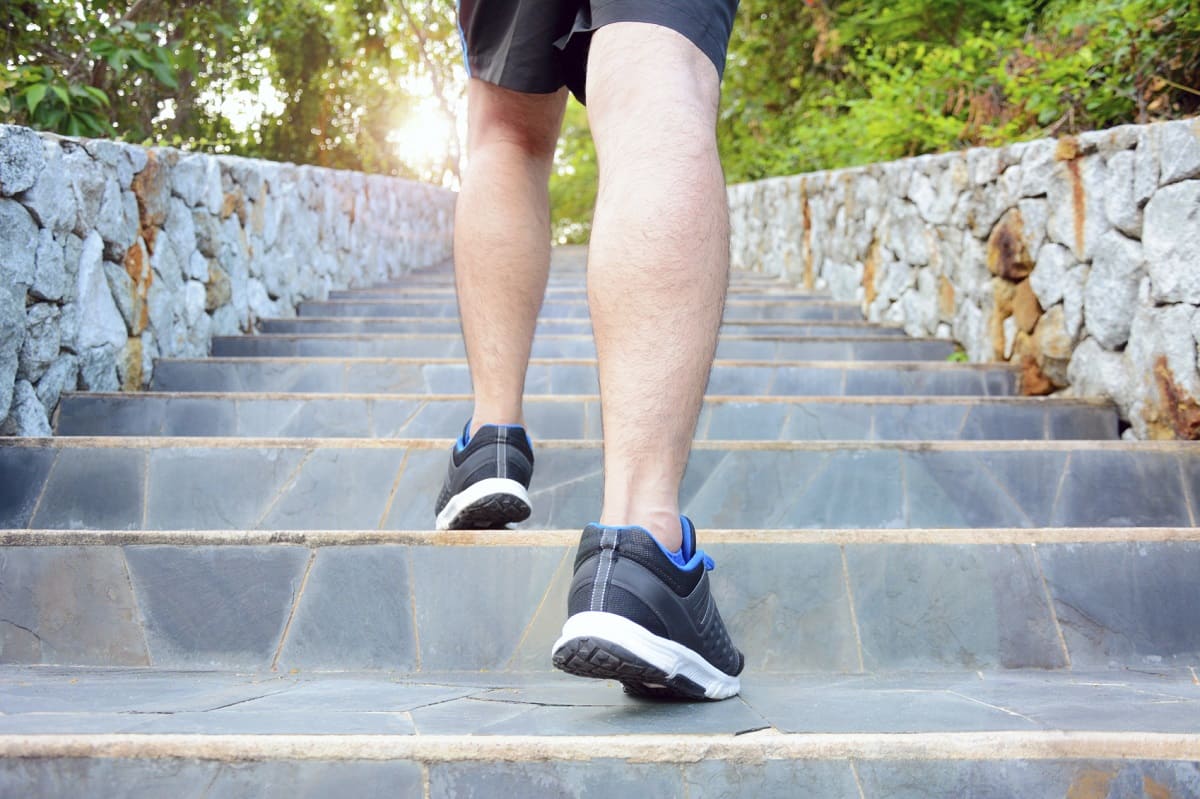
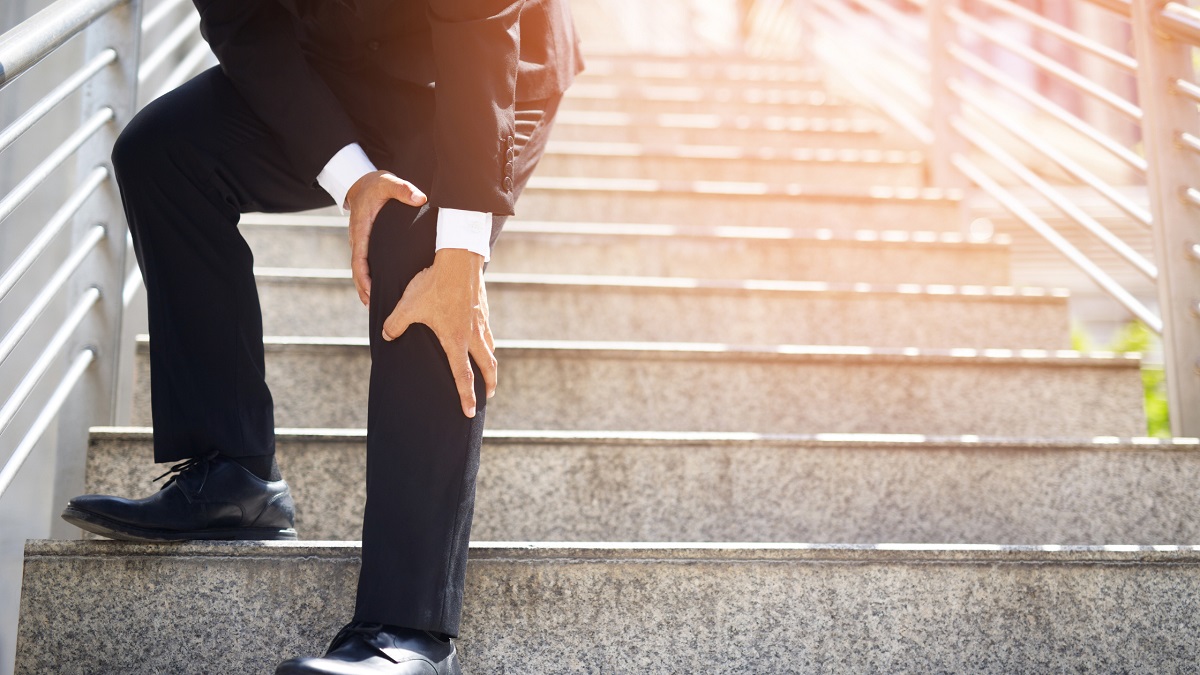

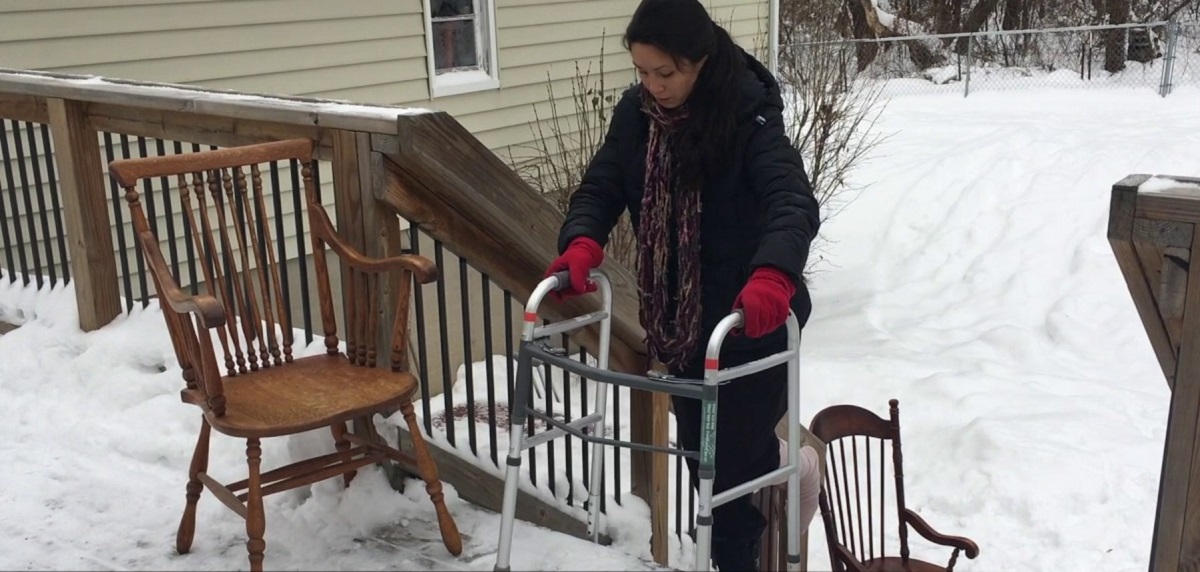
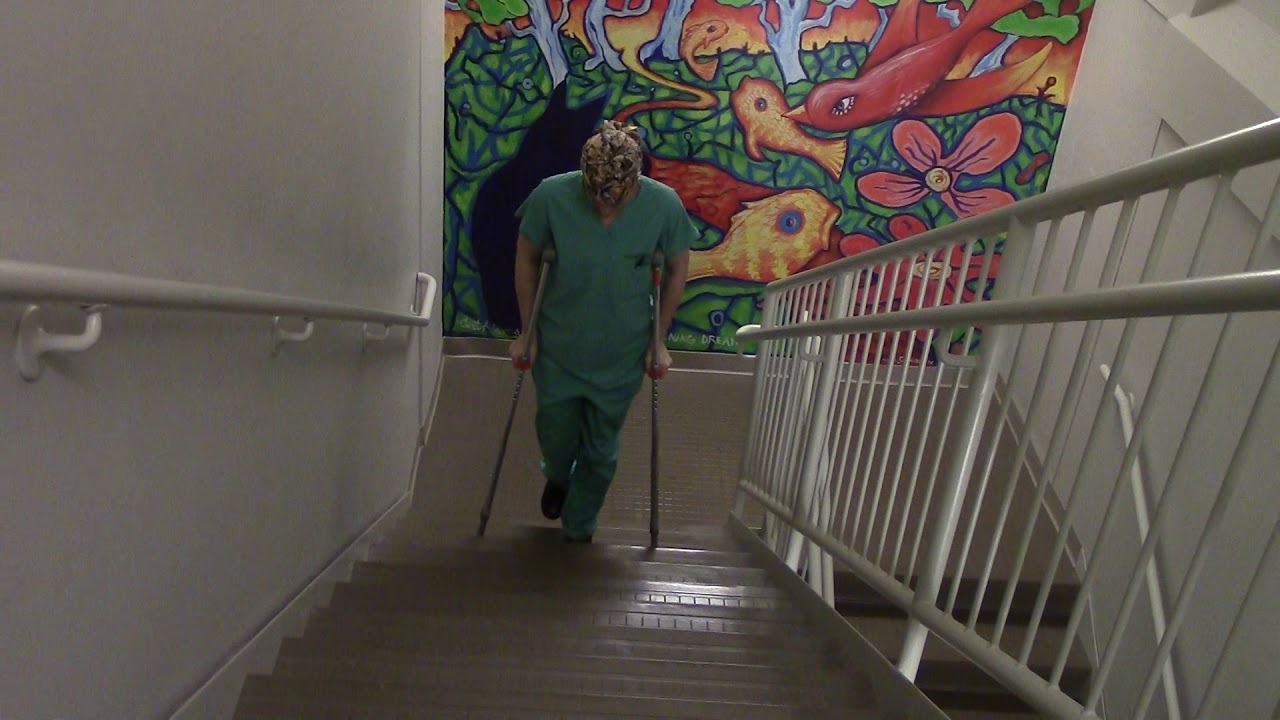

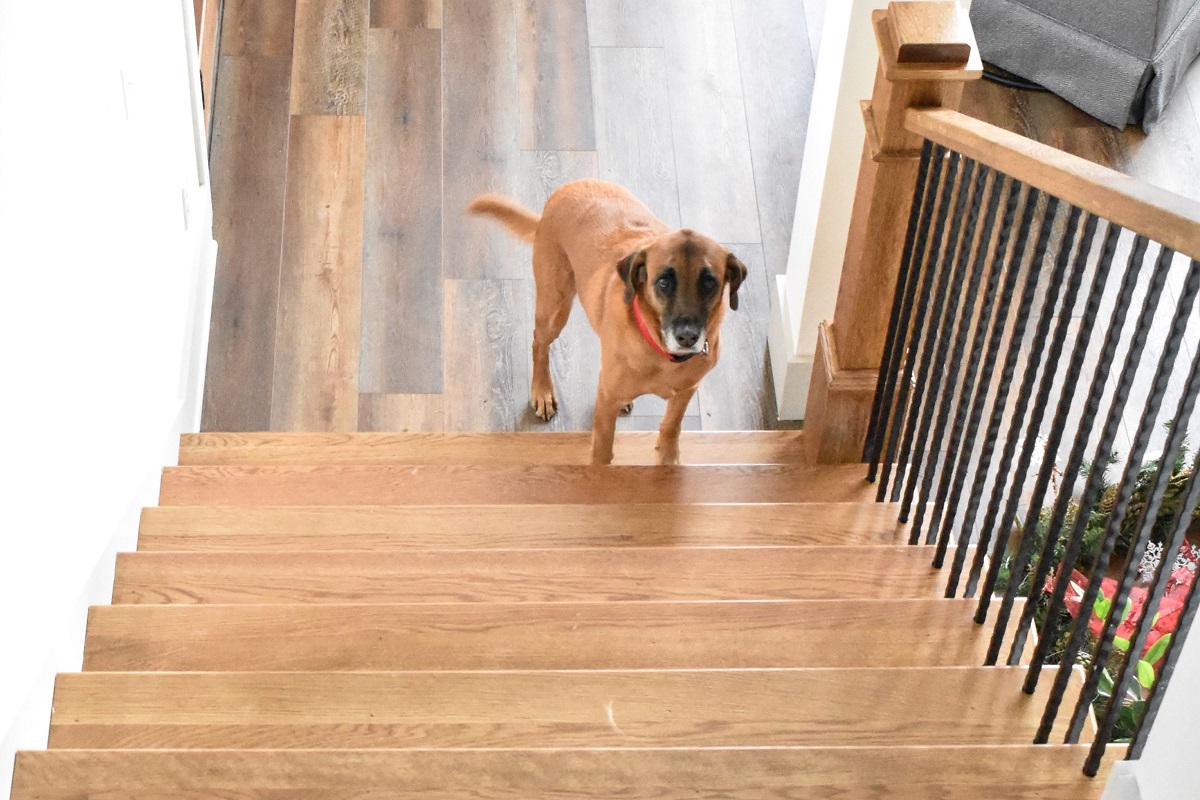



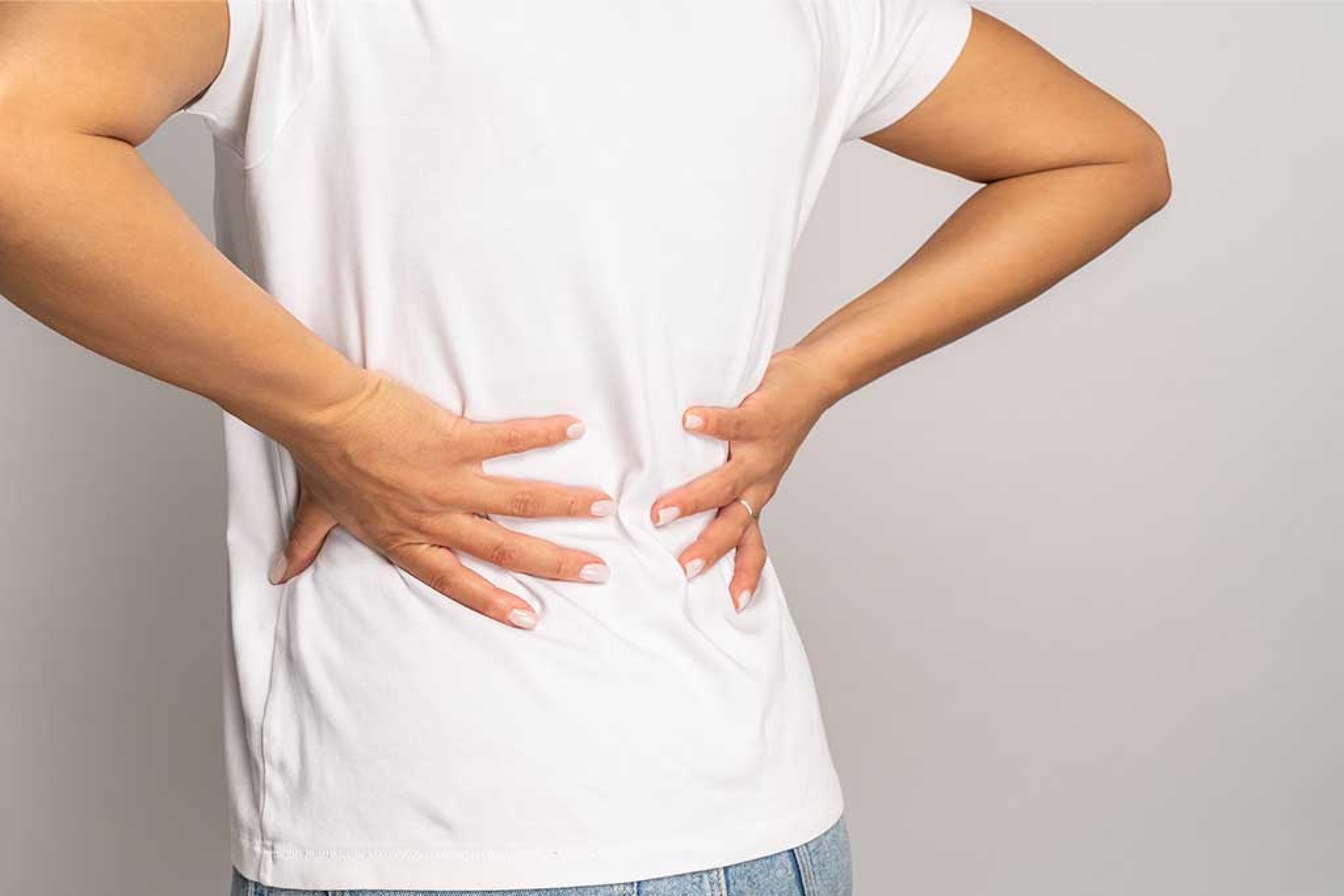



0 thoughts on “My Knees Hurt When I Go Up Stairs”